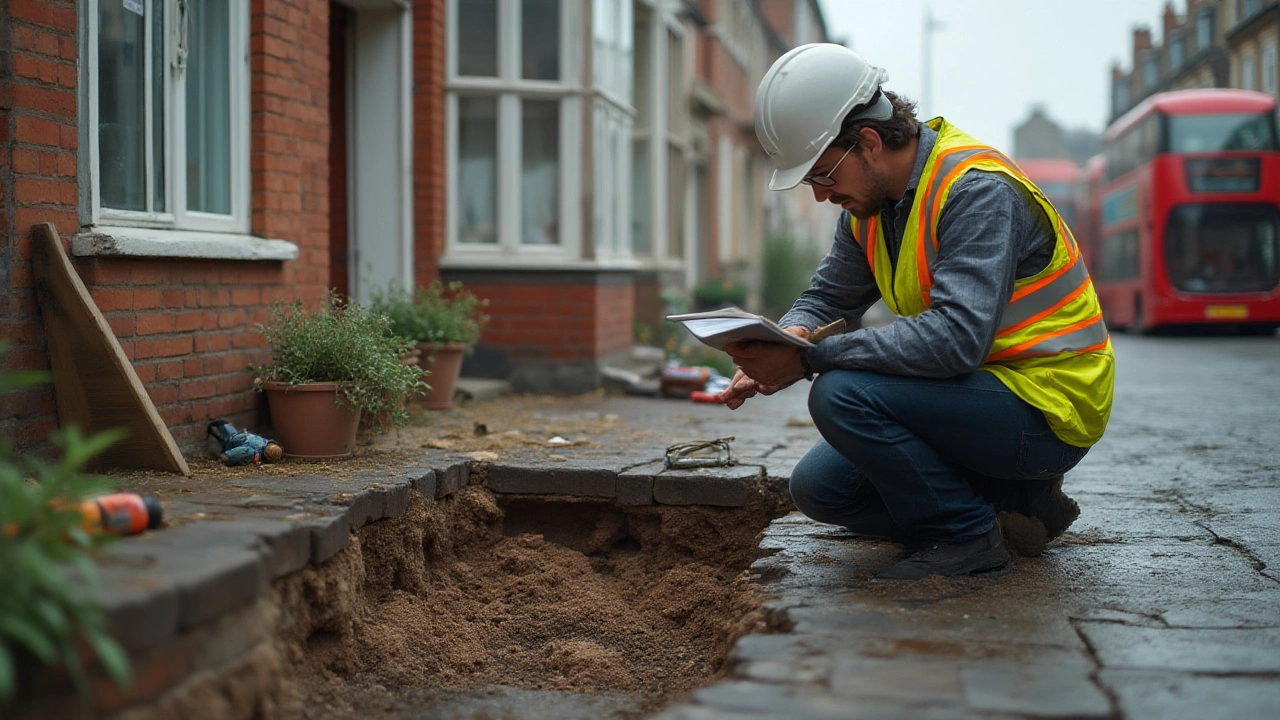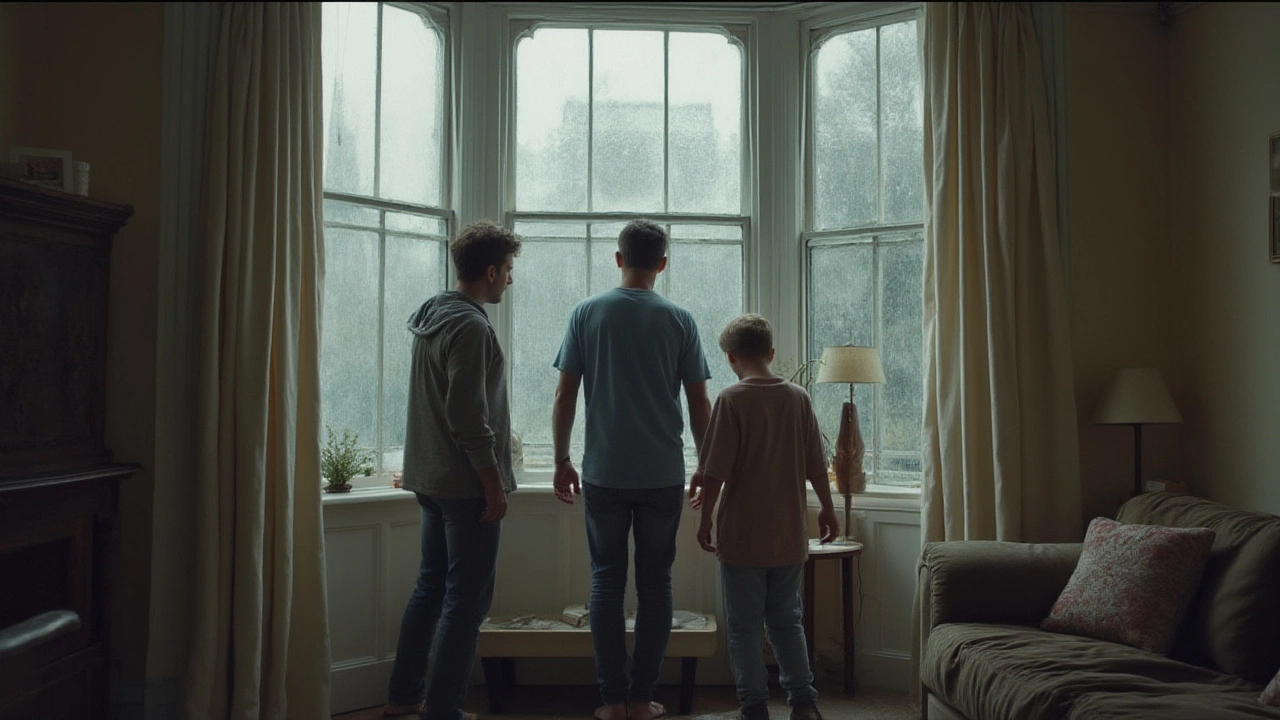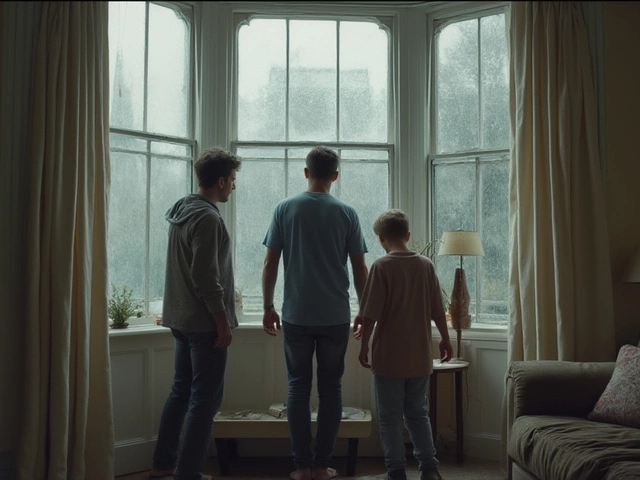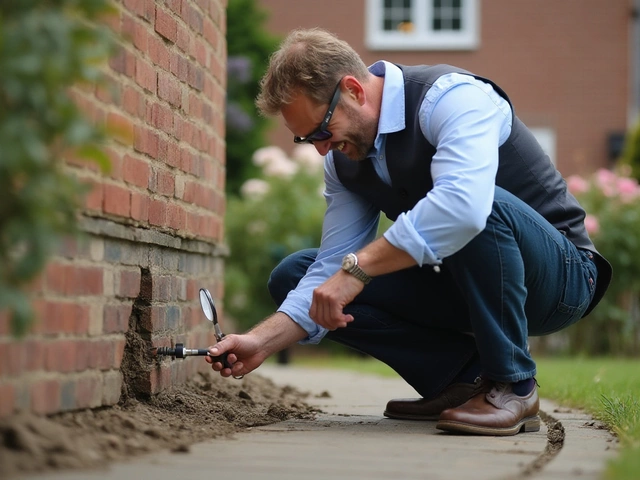Picture this: your kid drops a toy car in the dining room, and it rolls across the floor, stopping only at a familiar hairline crack by the window. Maybe you ignore it, maybe you obsess over it after everyone else goes to bed. If you own a home in a place like Halifax, where frost heaves, wet springs, and old building methods collide, the question jumps out: can you really live in a house with a cracked foundation?
How Foundation Cracks Happen—and What They Mean for Your House
The first time I noticed a crack in my own basement, I kind of shrugged it off. Halifax is notorious for its weird freeze-thaw cycles, and most of us have seen at least a few cracks spidering up our walls. Foundations—whether they're made of concrete, cinder block, or stone—flex with the seasons. They settle. Sometimes, they crack. But not all cracks are created equal.
Some cracks are just cosmetic surface splits from concrete shrinking as it dries. Others hint at something deeper. Experts say a hairline, vertical crack less than a few millimeters wide is usually harmless if it’s not growing. It can happen within the first year of construction. But a wide crack, a jagged one, or anything shaped like a stair-step climbing up concrete blocks? That should give you pause.
Why do these cracks appear? In cities like Halifax, the culprit’s usually movement in the soil, water pressure outside the foundation, or—if you’re unlucky—a problem with the original construction. Some cracks happen because of tree roots pulling at the foundation or the big temperature swings that make clay soil grow and shrink, flexing the concrete. According to data from the Canada Mortgage and Housing Corporation (CMHC), more than 60% of homes in some Atlantic regions report at least minor foundation cracks within the first 30 years.
But cracks aren’t just about how they look. The real trouble sneaks in when water follows those cracks into your basement, or when shifting foundations mess with the structural balance of your whole house. Here’s a quick breakdown of what certain cracks might mean:
- Vertical, thin cracks: Usually settling from the house aging. Watch, but not an emergency.
- Diagonal cracks: Could mean uneven settling or water pushing at one part of the house more than others.
- Horizontal cracks: Big red flag, especially for poured concrete. Signals pressure from outside, like soil or water, and can mean a wall is starting to bow inward.
- Wide cracks (over 6mm): Higher chance of structural trouble. Track them to see if they change.
There’s an old rule among local home inspectors: “If you can slide a nickel into the crack, call a pro.” Nothing kills homey vibes like worrying a wall’s about to buckle. And nothing ruins a morning faster than water in your basement after a heavy rain.
Is It Safe to Live with a Cracked Foundation?
This is where people start to sweat. Because yes, technically, you can live in a house with a cracked foundation. But should you? That all depends on at least three things: the size and type of the crack, how quickly it’s changing, and whether it’s letting in water or critters.
If you’re dealing with a hairline crack that’s been stable for years, most experts agree there’s little risk. Tons of homes in Nova Scotia are at least a century old, and many have lived with small cracks for decades with no real drama. In fact, most city inspectors won’t panic unless they see significant bowing in a basement wall, ongoing water entry, or cracks that change width or length in just a few months.
Bigger or growing cracks are what should get your attention. Here’s why: they can indicate that your foundation is actively shifting. That’s when doors stop closing, floors slope, or suddenly the kitchen cabinets are out of whack. In those cases, the structure above the crack could become unstable. That means real safety risks—ceilings could crack, walls could bow, even collapse isn’t impossible if things get bad enough. Sure, that’s rare, but it happens.
And moisture—that’s the silent danger. In Halifax, most basements are below grade, sitting against heavy, wet soil half the year. Water that sneaks in through foundation cracks brings all sorts of headaches: rot, mold (which can mess with allergies and asthma), rusted-out support posts, or even electrical shorts if water pools around wiring. According to the Nova Scotia Building Officials Association, water entering through cracks is responsible for over 80% of basement-mold cases in older single-family homes. If you have kids, like Lennox always running barefoot in our house, you don’t want those spores creeping around.
The risk ramps up if you spot horizontal cracks, big stair-step cracks in the corners, or places where the wall is bulging in. Those mean the structure might be failing under outside pressure. If you can see daylight through a crack, or if you ever hear popping or shifting noises, get out and call a structural engineer now—not tomorrow, not next week.
Most foundation cracks don’t mean immediate doom—but they shouldn’t be ignored. The wise move? Measure the crack, maybe take a picture, and check back every month or so. Jot down if it changes. Any fast changes, get a pro. A “wait and see” approach works for small, unchanged cracks, but anything new or active shouldn’t be left to fate.

How Foundation Cracks Affect Your Wallet
There’s a joke among local real estate agents: “Every foundation crack is $10,000 off your asking price.” There’s some truth to this, though the details are all over the map.
A cracked foundation itself doesn’t always wreck your home. Plenty of people live with them. But the threat to your bank account is real. Foundation issues scare off buyers more than almost anything else on an inspection report. In Halifax’s current market, a home with obvious, unrepaired foundation cracks can drop in value by 10-20%. If you’re thinking of moving one day, those cracks are going to come up in every viewing and offer. Some buyers will run; others will want a giant discount in case the crack turns ugly.
And if you decide to fix it? Here’s where things get interesting. Small, non-structural cracks can often be “epoxy injected” or sealed with professional-grade caulking for a few hundred bucks. But if you’ve got water issues, foundation settling, or walls bowing, repairs climb fast. Check out some typical Halifax rates from this past spring (prices in CAD):
| Repair Type | Typical Cost |
|---|---|
| Epoxy/Polyurethane Crack Injection (per crack) | $300 - $700 |
| Exterior Waterproofing (per linear foot) | $80 - $160 |
| Steel Brace Install (for bowing walls) | $1,000 - $5,000 per wall |
| Foundation Underpinning/Piering | $10,000 - $30,000+ |
Insurance muddies the water too. Most home policies in Canada won’t cover “wear and tear” or cracks caused by gradual movement—that’s considered maintenance. But if the crack was caused by a sudden flood or a tree falling on your house, you might have a claim. Check your policy, and ask before work starts.
And here’s a sneaky tip: don’t just patch the crack and pretend it never happened if you’re planning to sell. Home inspectors have eagle eyes and electronic moisture meters. If you do a cover-up—especially with something like Drylok paint or a quick DIY job—you’ll spook buyers even more. Better to fix it right and keep the paperwork, so the next owners see you dealt with it the responsible way.
What to Do If You Find a Crack in Your Foundation
So, you spotted a crack. Maybe it’s tiny, or maybe it’s big enough to get your finger in. Where do you go from here? Here’s what’s kept my own nerves steady when I’ve discovered concrete problems.
- Don’t panic—document. Grab a phone, take photos, and write down when you first noticed the crack. Mark its ends with a pencil, inside and out if reachable. If you’re watching for changes, sticky tape next to the crack can help track movement.
- Measure it. A basic ruler or even a business card works in a pinch. Track width at a few points. This comes in handy if you need to check for growth later.
- Watch for water and other signs. Any puddles? Musty smells? Peeling paint? Chalky powder on the floor? These are clues the crack has gone from “cosmetic” to “problem.”
- Ask the pros if you’re worried. If the crack is wider than 3mm, seems to be growing, or comes with bulges, doors jamming above it, or new leaks after rain, call a foundation specialist or structural engineer. A basic visit often costs less than you’d think and can save massive headaches down the line.
- DIY with care. For those thin, cosmetic cracks: concrete patch or epoxy from the hardware store can seal things up. But never use hydraulic cement on its own, since it doesn’t flex if the crack moves and could pop loose later. And don’t just patch a leaking crack and ignore the source. Redirect your downspouts away from the house, check your grading, and fix those eavestroughs so water can’t pool next to the walls.
- Prevention is everything. Regularly walk around your house looking for new cracks, especially after storms or after a bitter winter. Keep your soil sloping away from your walls, and trim big tree roots that dig under foundations. Moisture management wins half the battle.
Sometimes you have to accept a few quirks in an older place—especially if you bought your home for the character and not the perfection. I tell Lennox that the little crack by the stairs is like a wrinkle: proof our house is full of stories. But if the house starts telling you new stories—louder, more worrisome ones—that’s the time to listen and act.
Living above a cracked foundation is normal in a city like Halifax, as long as that crack isn’t growing or threatening your safety. Keep your eyes open, fix the issues you can, and call the experts when in doubt. You don’t have to move out over every split in the concrete—but you do have to stay alert. That’s just part of home ownership here.






